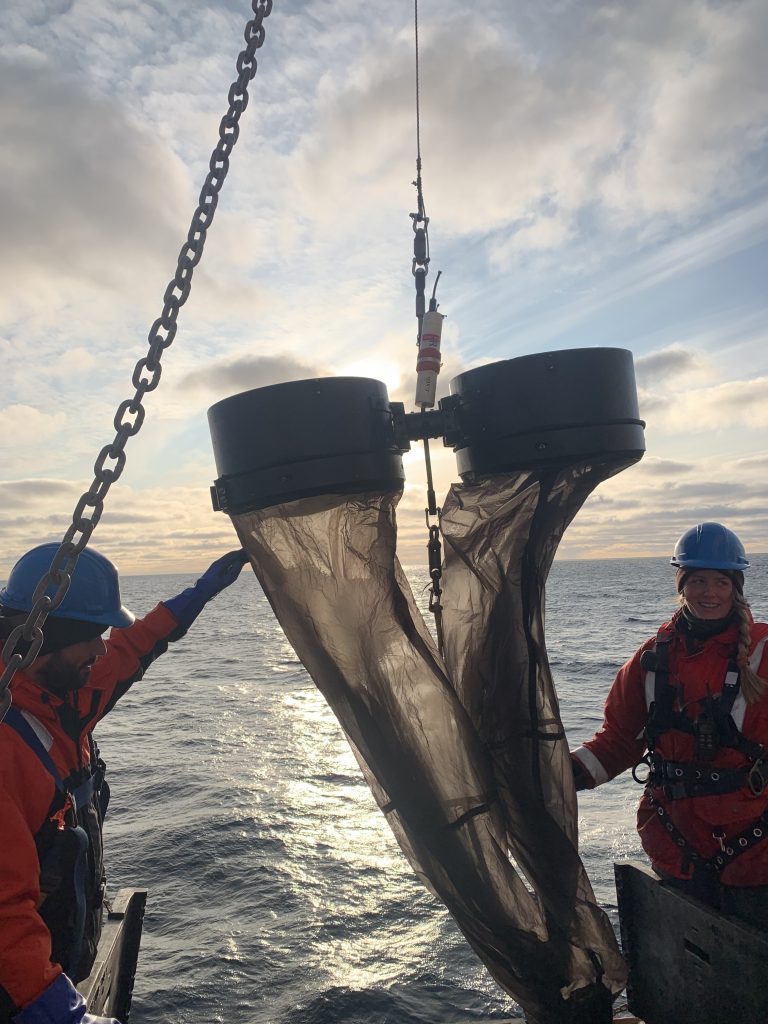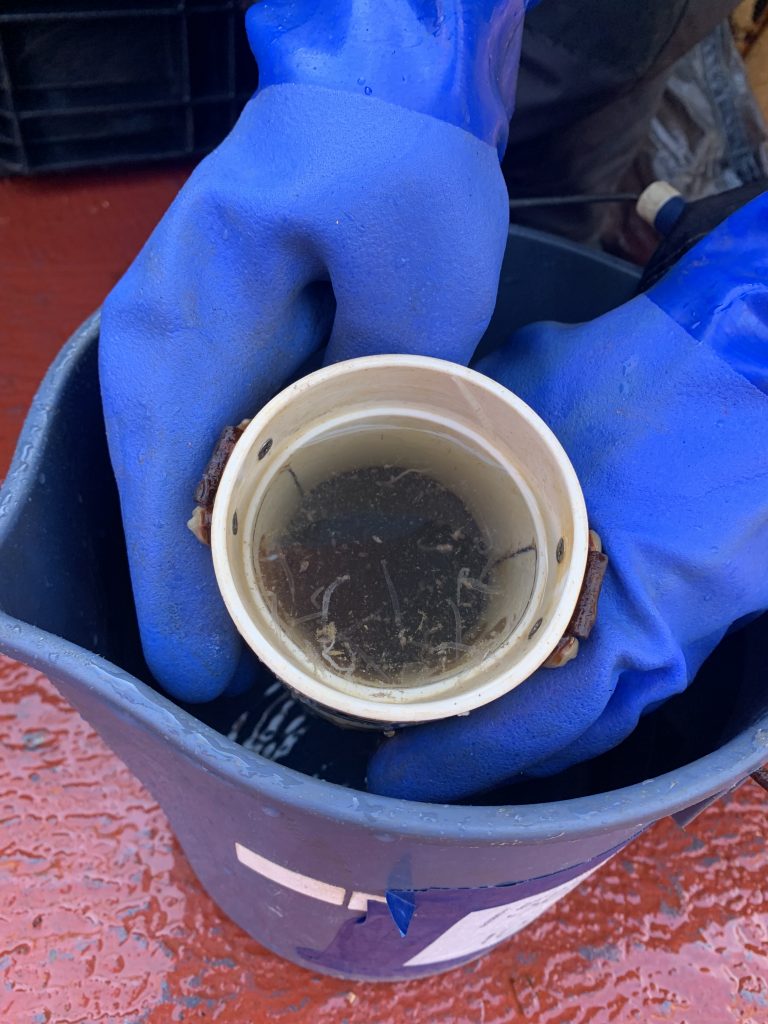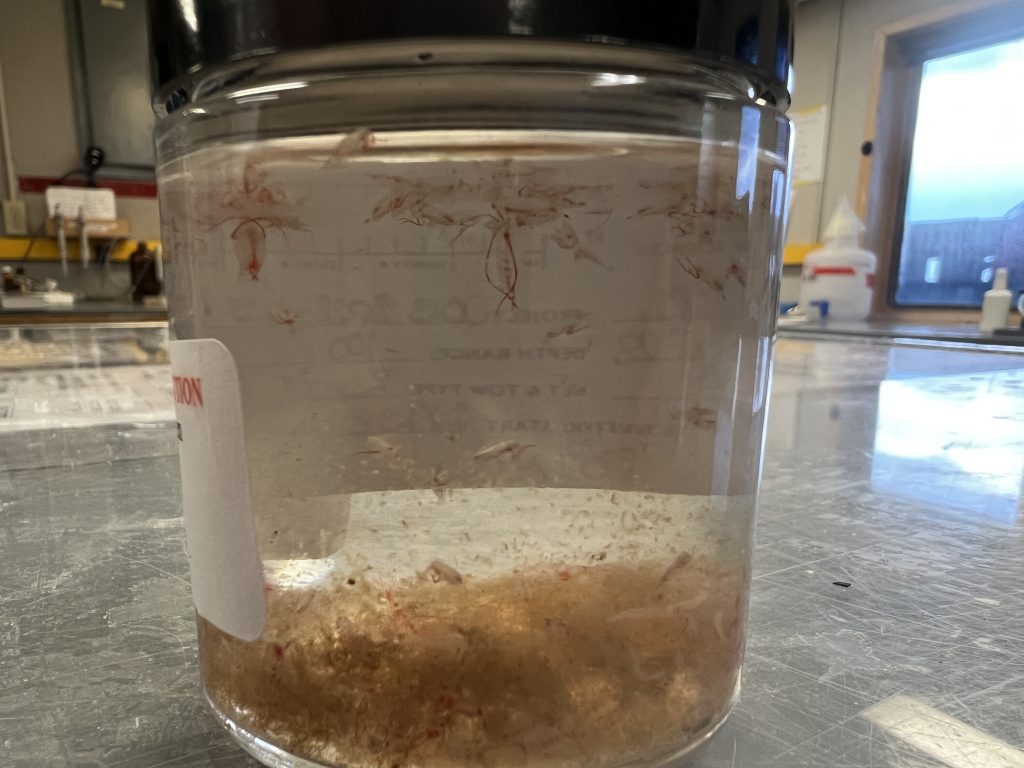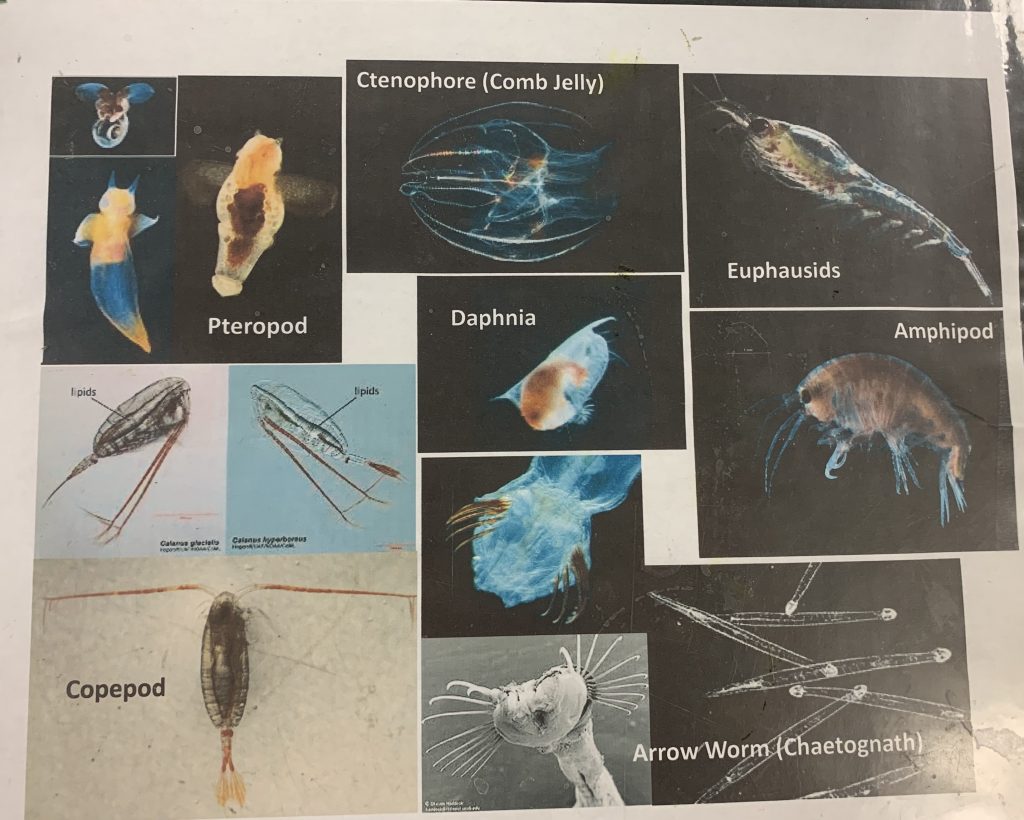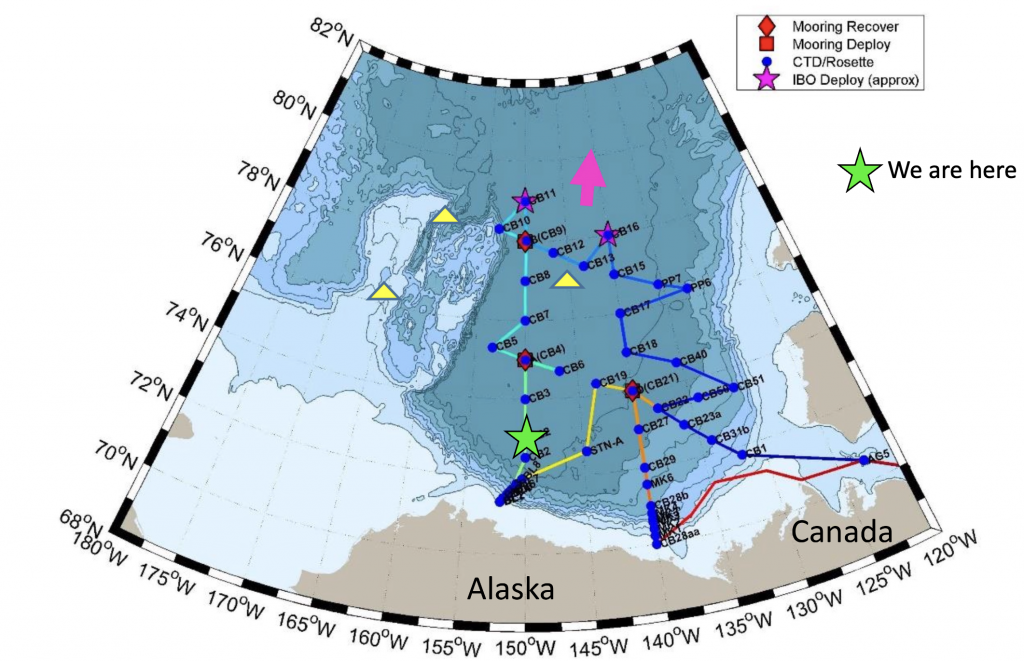Dispatch 19: Bingo Let’s Go for the BONGOs
Louis Criqui
October 3, 2023
Dispatch 19: Bingo Let’s Go for the BONGOs
My name is Louis, and I am doing my master’s degree at the University of Sherbrooke. Now this is said, let’s talk about the bongos 😉.
At every station we are doing two different activities: a CTD/rosette cast and bongo nets. A bongo cast consists of catching zooplankton and phytoplankton in the top 100 meters of the ocean. The Arctic Ocean might seem like a biological desert, but it isn’t! The Beaufort Gyre region is full of nutrients thanks to the many rivers that flow into it. The nutrients allow for primary production (that is, photosynthesis and phytoplankton population growing), which benefits the whole food chain.
The bongos are two tubular nets (see Photo 1) with a flowmeter attached on a cable. Usually, three members of the science team deploy them while a deckhand controls the winch. We take a note of the flowmeter before and after the deployment of the bongos which gives us a measure of how much water has flowed through the nets. One person takes control of the A-frame and the two others prepare the nets by adding “cod-ends” at the bottom of each one. These are 150 micrometer filters that catch the plankton while letting the water pass through. We also have a depth sensor on the bongo nets, so we know how deep they are collecting plankton. When we deploy the beast, we must be clipped to the boat because if someone falls overboard, that would not be ideal! Once the bongo has done its little trip to 100 meters, we spray the nets to collect all the plankton in the cod ends. The cod ends are disconnected from the nets and we can view the catch of the day. Sometimes, we even find jellyfish hooked on the bongo! The presence of jellyfish in the Arctic Ocean is more proof of global warming because a few years ago, they were not living this far north. They were forced to migrate to cooler waters, as the waters in their usual habitats are too warm for them now.
The final step of the bongo activity is to transfer the contents of the two cod ends into jars. In one jar, the preservative is ethanol and will be used for DNA analysis and the other jar is treated with formalin which preserves the bodies so they can easily be identified and counted. Sometimes the bongos are quite hard to work with when there is a lot of wind because they can act like sails and they are quite heavy.
During this trip we caught a lot of copepods (they look like little shrimp), some jellyfish, some amphipods, and more (see Photo 2)! We even saw bioluminescence in the first Bongo net we deployed. Since the first bongos were deployed 20 years ago, the data collected has helped understanding which species were living in the water column, how they are distributed and their relative abundance. These data also help us in understanding the response of these populations to biogeochemical and physical changes caused by the global warming.
